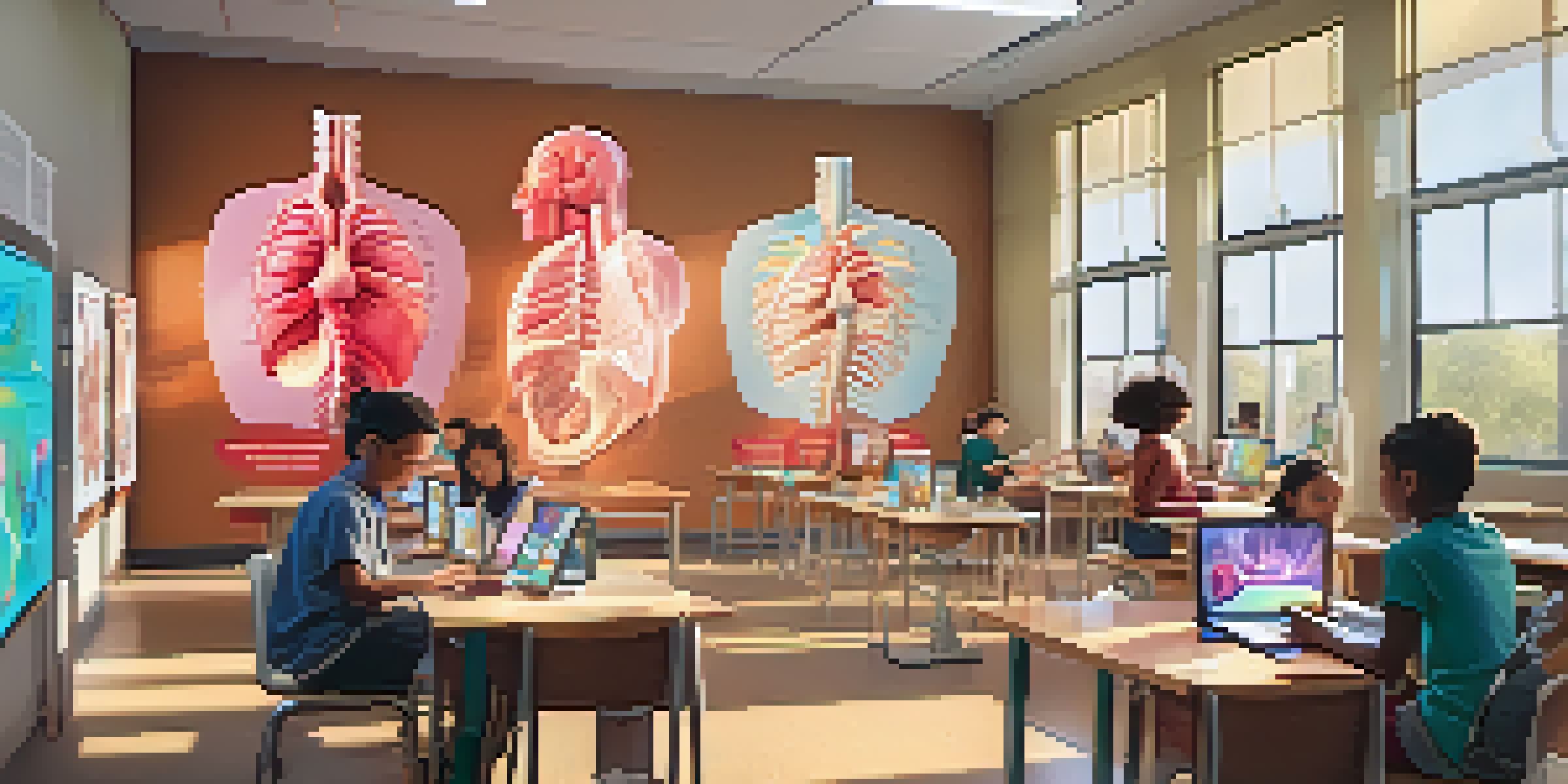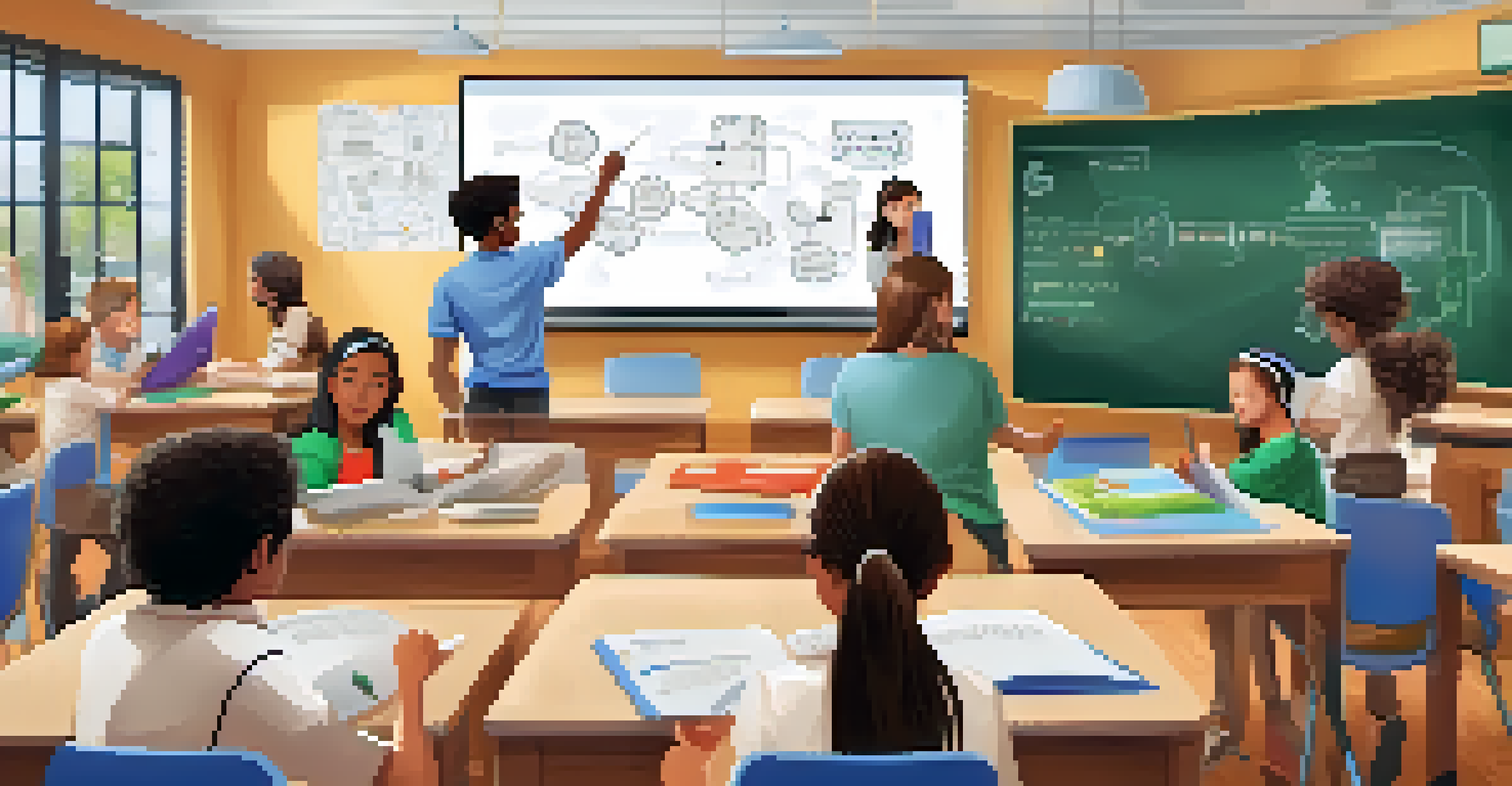Gamification of Learning: AR as a Tool for Student Engagement

Understanding Gamification and Its Importance in Learning
Gamification involves applying game-like elements in non-gaming contexts to motivate users. In education, this means using rewards, challenges, and competition to engage students. By integrating these elements into learning experiences, educators can make lessons more appealing and interactive.
Gamification is the use of game elements in non-game contexts to enhance user engagement.
The importance of gamification in learning lies in its ability to increase student participation and retention. When students feel like they are playing a game, they are more likely to immerse themselves in the material and remain focused. This transformation can lead to a deeper understanding of complex subjects.
Moreover, gamification fosters a sense of achievement; as students progress through levels or complete challenges, they gain confidence. This journey not only enhances their learning experience but also encourages a positive attitude towards education.
How Augmented Reality (AR) Fits into Gamified Learning
Augmented Reality (AR) blends digital content with the real world, making it a powerful tool for gamification in education. By overlaying images, sounds, and information onto the physical environment, AR can turn a typical classroom into an interactive learning playground. This technology can transform mundane lessons into thrilling adventures.

For instance, imagine students exploring a historical site through AR, where they can see and interact with animated characters from the past. This immersive experience not only enriches their understanding but also makes learning memorable. When students can visualize concepts in real-time, they are more likely to grasp difficult topics.
Gamification Boosts Learning Engagement
Integrating game-like elements in education enhances student motivation and participation, leading to better retention of complex subjects.
Incorporating AR into gamified learning encourages collaboration among students, as they often work in teams to solve challenges. This teamwork fosters communication skills and builds camaraderie, creating a supportive learning environment.
Examples of AR Gamification in Educational Settings
Several educational institutions have successfully implemented AR gamification to enhance student engagement. For example, a biology class might use AR to visualize the human anatomy in 3D, allowing students to interact with organs and systems as though they were real. This hands-on approach can make complex topics more relatable and easier to understand.
Augmented reality allows us to merge the digital world with the physical world, thus creating experiences that were previously unimaginable.
Another example is the use of AR in language learning, where students can point their devices at everyday objects to receive translations or grammar tips. This not only makes learning a new language more accessible but also encourages students to practice in their daily lives, reinforcing their skills.
These real-world applications demonstrate the potential of AR gamification to transform traditional learning methods. By providing interactive experiences, educators can cater to various learning styles, ensuring that every student has an opportunity to thrive.
The Role of Feedback in Gamified Learning Environments
Feedback is a crucial element in any learning environment, especially in gamified settings. When students engage with AR games, immediate feedback on their performance helps them understand their strengths and areas for improvement. This instant response can be much more powerful than traditional grading methods.
For example, in a math-based AR game, students could receive points for correct answers and tips for mistakes right away. This not only keeps them motivated but also encourages them to learn from their errors. When students can see their progress in real-time, they are more likely to stay engaged.
AR Transforms Learning Experiences
Augmented Reality (AR) creates immersive and interactive environments that make lessons more engaging and memorable for students.
Furthermore, constructive feedback contributes to a growth mindset. Students who understand that their skills can improve through effort and practice are more likely to embrace challenges and persist through difficulties.
Challenges of Implementing AR Gamification in Education
While AR gamification offers numerous benefits, educators also face challenges when implementing it in classrooms. One major concern is the availability of technology; not all students may have access to AR devices or smartphones. This digital divide can create inequality in learning experiences.
Another challenge is the steep learning curve for both teachers and students. Educators may need training to effectively integrate AR into their lesson plans, and students might require guidance to navigate new technologies. Ensuring that everyone is comfortable with the tools is essential for success.
Additionally, there can be distractions associated with AR games. If not properly managed, students might focus more on the game aspects than the educational content. Striking the right balance between fun and learning is crucial for achieving the desired outcomes.
The Future of AR Gamification in Education
As technology continues to evolve, the future of AR gamification in education looks promising. With advancements in AR tools and software, we can expect even more immersive and interactive experiences that cater to diverse learning needs. This evolution can lead to a more personalized education system that adapts to individual student preferences.
Moreover, the integration of artificial intelligence (AI) with AR could further enhance gamified learning. Imagine an AR system that learns from student interactions and tailors challenges to their skill levels, providing a truly customized educational journey. This could make learning more efficient and enjoyable.
Feedback Fuels Student Growth
Instant feedback in gamified learning helps students recognize their strengths and areas for improvement, fostering a growth mindset.
Incorporating AR gamification into curricula not only prepares students for future technological landscapes but also fosters critical thinking, creativity, and problem-solving skills. As educators and students embrace these innovations, the possibilities for engaging and effective learning are limitless.
Conclusion: Embracing AR Gamification for Enhanced Learning
In conclusion, the gamification of learning through AR presents an exciting opportunity for enhancing student engagement. By combining game elements with augmented reality, educators can create dynamic and interactive experiences that captivate students' attention. This approach not only makes learning more enjoyable but also fosters deeper understanding and retention of knowledge.
As we navigate the challenges of implementation, it’s essential to remain focused on the ultimate goal: providing a rich learning experience that meets the needs of all students. With careful planning and support, AR gamification can become a vital part of modern education, transforming how students learn.

Ultimately, embracing AR gamification is about preparing students for a future where technology and creativity intersect. By investing in these innovative methods, we can inspire the next generation of learners to become engaged, curious, and lifelong students.